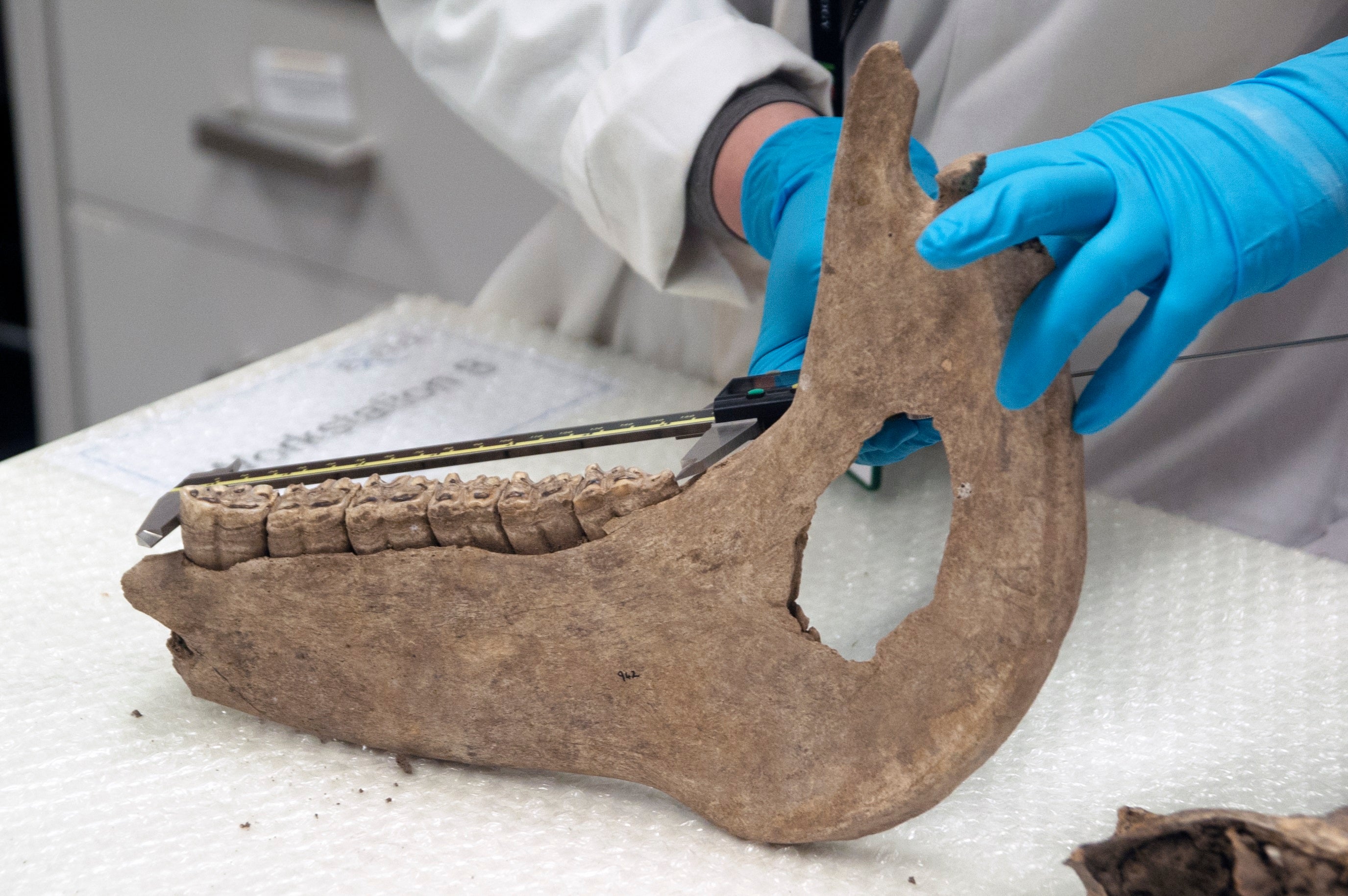Medieval warhorses no bigger than modern-day ponies, research finds
Archaeologists analysed equine skeletons from 171 excavation sites across England.

Your support helps us to tell the story
From reproductive rights to climate change to Big Tech, The Independent is on the ground when the story is developing. Whether it's investigating the financials of Elon Musk's pro-Trump PAC or producing our latest documentary, 'The A Word', which shines a light on the American women fighting for reproductive rights, we know how important it is to parse out the facts from the messaging.
At such a critical moment in US history, we need reporters on the ground. Your donation allows us to keep sending journalists to speak to both sides of the story.
The Independent is trusted by Americans across the entire political spectrum. And unlike many other quality news outlets, we choose not to lock Americans out of our reporting and analysis with paywalls. We believe quality journalism should be available to everyone, paid for by those who can afford it.
Your support makes all the difference.The image of the medieval warhorse as a giant snorting, stamping beast is a myth, according to new research, with many mounts of the era no bigger than modern-day ponies.
The chargers of English knights were often below 14.2 hands, which would see them classed as ponies today.
A hand is four inches and is a measurement specific to horses, and measures their height from the ground to the top of the shoulder – only equines taller than 14.2 hands are deemed horses.
Research by academics from a number of English universities analysed equine skeletons from 171 different archaeological sites across the country dating between AD 300 and 1650.
It found horses of 15 hands to 16 hands, the size of modern racehorses and showjumpers, were “very rare indeed” even in stables owned by royalty.
Animals of this size would have been considered large by medieval people, the researchers said.
In period dramas, the animals chosen for medieval warhorses are usually 17 hands to 18 hands high – equivalent in height to massive Shire horses bred for pulling heavy loads.
The researchers found medieval animals were not only bred for size, but for tasks such as tournaments and long-distance raiding campaigns.
Selective breeding of warhorses was influenced by their physical characteristics and their temperament.
Historical records revealed huge sums were spent on “developing and maintaining networks for the breeding, training and keeping of horses used in combat”.
Researcher Helene Benkert, from the University of Exeter said: “Neither size, nor limb bone robusticity alone, are enough to confidently identify warhorses in the archaeological record.
“Historic records don’t give the specific criteria which defined a warhorse; it is much more likely that throughout the medieval period, at different times, different conformations of horses were desirable in response to changing battlefield tactics and cultural preferences.”
The tallest horse discovered from Norman times was excavated at Trowbridge Castle in Wiltshire and stood at 15 hands.
The high medieval period – between 1200 and 1350 – saw domesticated horses start to reach heights of 16 hands.
The report’s authors found that it was not until the post-medieval period, around the beginning of the reign of Henry VIII, that the average height of horses increased to that of modern-day draft animals.
Professor Alan Outram, from the University of Exeter, said: “High medieval destriers (warhorses) may have been relatively large for the time period, but were clearly still much smaller than we might expect for equivalent functions today.
“Selection and breeding practices in the royal studs may have focused as much on temperament and the correct physical characteristics for warfare as they did on raw size.”
Professor Oliver Creighton, also of the University of Exeter and the principal investigator for the project, said: “The warhorse is central to our understanding of medieval English society and culture as both a symbol of status closely associated with the development of aristocratic identity and as a weapon of war famed for its mobility and shock value, changing the face of battle.”
The research was funded by the Arts and Humanities Research Council and published in the International Journal of Osteoarchaeology.
Academics in from the universities of Sheffield, Leicester, Bournemouth and East Anglia were also involved.